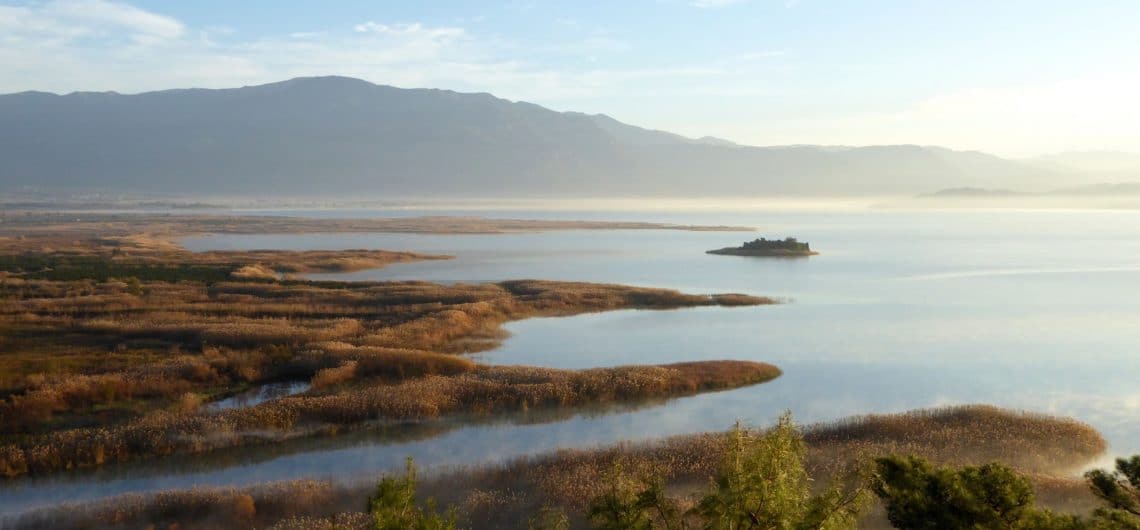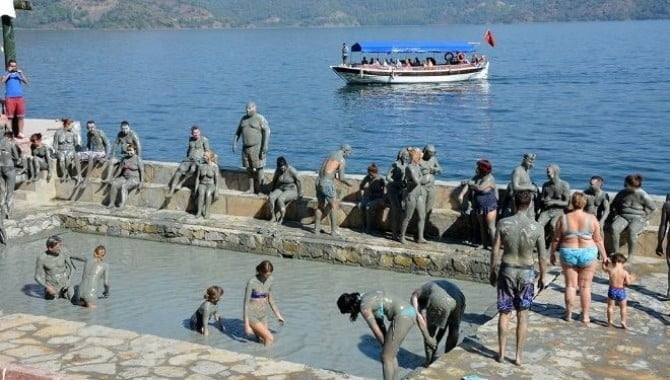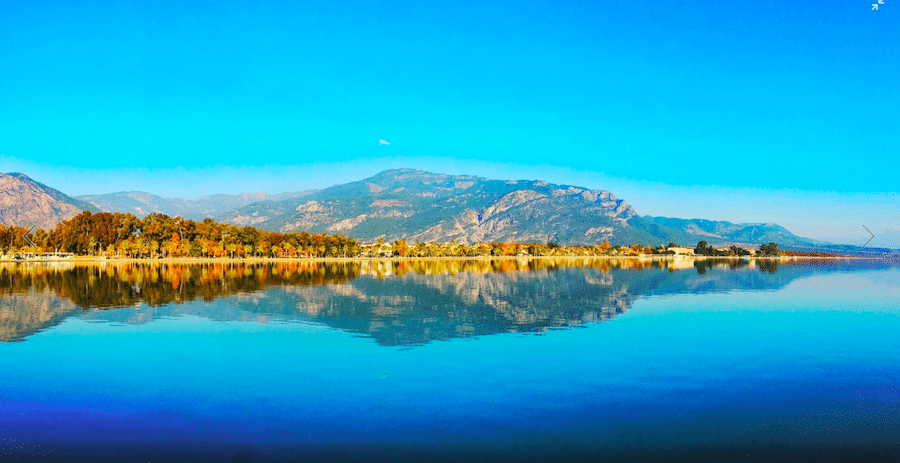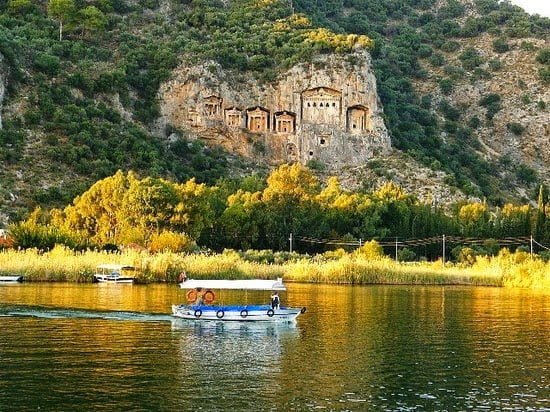Cutting through the water to the accompaniment of the rhythmic sound of the engine, your boat takes you to the Sultaniye thermal springs, where Ölemez Mountain reaches the shore of the lake from its steep peak crowned by the walls of the Imbroz castle built by the inhabitants of Caunos. According to a legend connected with the name of this majestic mountain covered with the dark green of Turkish Pine forests, Lumen the Wise came here while in search of the herb of immortality and while taking in the vice, he said: “One could not die here even if one wanted to.”
Leaving a backwash of white foam behind it, the boat you will get on at the Köycegiz quay will take you on a trip on an extraordinary lake with delightful resting points. The second largest lake of the Aegean Region after Bafa with its surface of 5500 hectares, the Köycegiz Lake is situated in a depression that was a lagoon in old times. The mountainous terrain surrounding the lake that has alluvial plains to its northeast and southwest has a steep profile cleaved by deep valleys.
Looking from the thick shadows of eucalyptus and palm trees to the serene shores of the Köycegiz Lake, you find yourself amidst to the sweetest of dreams… The wish to be one with this magnificent nature, to explore every corner of it engulfs you. The prettiest trip one can take is the boat trip to the Dalyan River that passes the Köycegiz Lake and connects to the sea or to the labyrinthine waterways of the delta and to the silken sand of the Iztuzu beach washed with the waves of the Mediterranean.
The Köycegiz district, stretching at the side of the glittering green water of the Köycegiz Lake like an island of pack, is surrounded by the Mediterranean pack of the Western Taurus mountains to its north. The Olemez Mountain which is an extension of the Cankurtaran Mountain, the Kızlan mountain forming the last peaks of the Sandraz Mountains in the north and the Pandaluz Mountain to the northeast create a magnificent scene with these thick woodlands.
After Seljuk Sultan Alparslan’s victory over the Byzantine army on Manzikert plain in 1071, Anatolia became the Turkish homeland. Kilic Arslan II added almost all of Caria to the lands of the Selcuk State with his raids during 1093-1095. The settling of Turkish tribes coming in waves from central Asia in Western Anatolia against the Byzantine border accelerated this spread. Anatolia was shared among small emirates that became independent during the chaotic period which started when the Mongols took Anatolia after the Anatolian Selcuks were defeated by the Mongol Ilkhanate in the battle of Kösedag in 1243 and lasting until 1300. This state of affairs continued until Sultan Mehmed II, the Conqueror united Anatolia until Ottoman rule.





